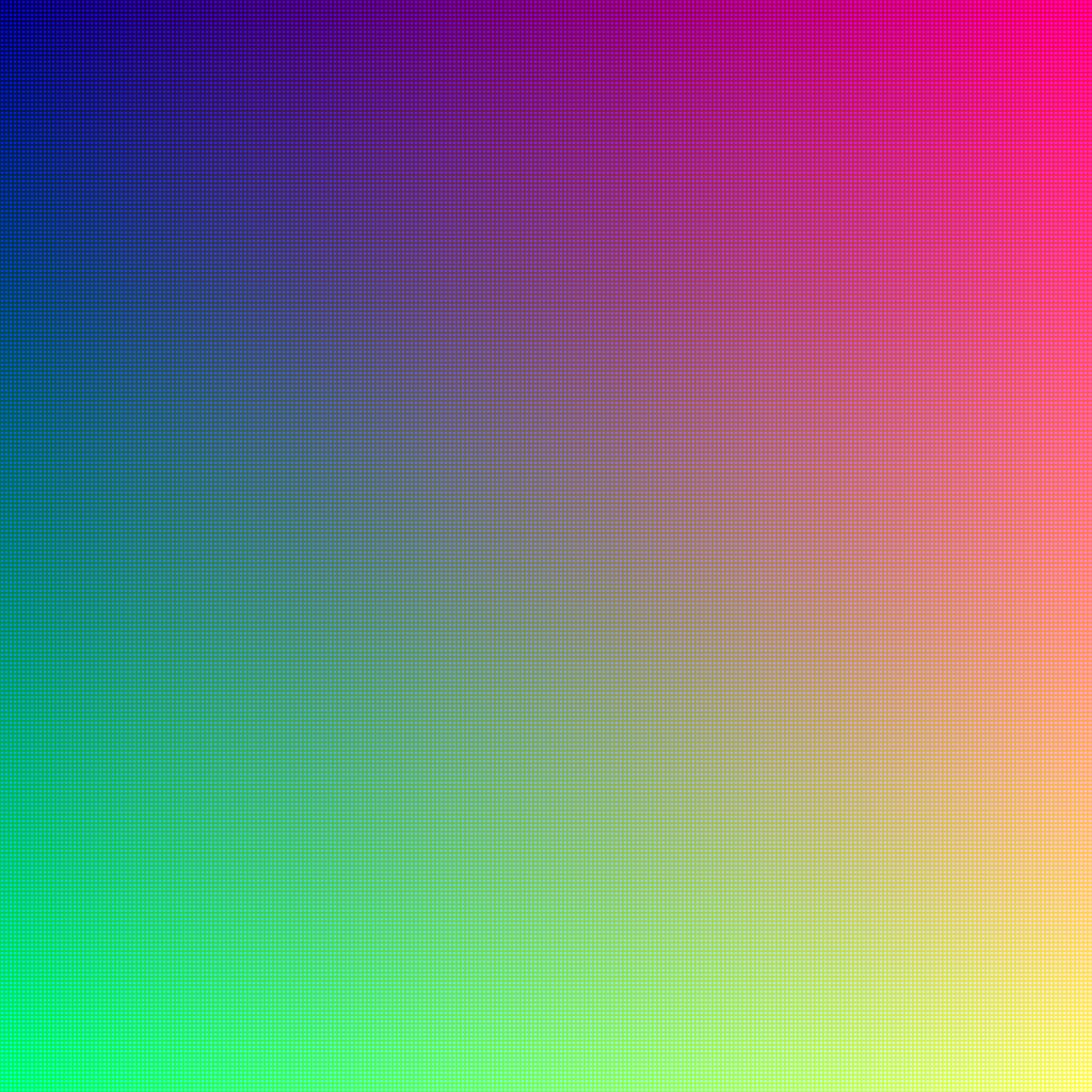|
SilverFast
SilverFast is a family of software for image scanning and processing, including photos, documents and slides, developed by LaserSoft Imaging. There are also other applications for image processing using digital cameras or printers and for 48-bit raw data image processing. History SilverFast was introduced in 1995, it is still under development today. Some scanner manufacturers bundle their hardware with SilverFast software. Some of the features developed for SilverFast, especially in the area of color management, error detection and automatic dust and scratch removal, have been patented. The European Digital Press Association named SilverFast the "Best colour management software of the year 2008" for improving the dynamic range of most scanners and for creating ICC profiles automatically. In 2011 version 8 was introduced, and HDR imaging software followed in 2012. SilverFast 9 has been released in 2020. Patents * 2005: Patent granted on barcode technology used for the ... [...More Info...] [...Related Items...] OR: [Wikipedia] [Google] [Baidu] |
LaserSoft Imaging
LaserSoft Imaging AG is a software developer designing image processing software such as SilverFast for scanners and large format printers. The company's headquarters is located in Kiel, Germany, north of Hamburg, and another office in Sarasota, Florida, United States. History 1986–1990 LaserSoft Imaging was founded in Spring 1986 by the physicist Karl-Heinz Zahorsky, the president of the company today. LaserSoft Imaging became an early adopter of color- and image processing on the Macintosh. It was the first company to distribute video digitizers, such as Pixelogic's 'ProViz' and Truvel's 'TrueScan', the first professional color scanner for the Macintosh, which was first shown at Hannover trade fair CeBIT in 1988, to which LaserSoft Imaging was invited by Apple Computer. 1990–2000 In 1991 LaserSoft Imaging became a registered GmbH and moved into a large Prepress house to help in setting up color reproduction on the desktop and to link Chromacom systems to Ma ... [...More Info...] [...Related Items...] OR: [Wikipedia] [Google] [Baidu] |
Infrared Cleaning
Infrared cleaning is a technique used by some film scanners and flatbed scanners to reduce or remove the effect of dust and scratches upon the finished scan. It works by collecting an additional infrared channel from the scan at the same position and resolution as the three visible color channels (red, green, and blue). The infrared channel, in combination with the other channels, is used to detect the location of scratches and dust. Once located, those defects can be corrected by scaling or replaced by inpainting. Method The three color dyes in typical color film emulsions are largely transparent to infrared light, so the infrared image is almost uniformly clear, unlike the RGB images. On the other hand, dust absorbs and scratches scatter the infrared. Any dust spots or scratches appear as dark marks in the infrared, making them easy to find and compensate for. Pixels that are partially occluded (for example, the dust only obscures a small portion of the pixel) may be corr ... [...More Info...] [...Related Items...] OR: [Wikipedia] [Google] [Baidu] |
Raw Image Format
A camera raw image file contains unprocessed or minimally processed data from the image sensor of either a digital camera, a motion picture film scanner, or other image scanner. Raw files are so named because they are not yet processed, and contain large amounts of potentially redundant data. Normally, the image is processed by a raw converter, in a wide- gamut internal color space where precise adjustments can be made before conversion to a viewable file format such as JPEG or PNG for storage, printing, or further manipulation. There are dozens of raw formats in use by different manufacturers of digital image capture equipment. Rationale Raw image files are sometimes described as "digital negatives". Like transparency film and unlike negative film, raw image pixels contain positive exposure measurements. The raw datasets are more like undeveloped film: a raw image can be developed by software in a non-reversible manner to reach a complete image that resolves ev ... [...More Info...] [...Related Items...] OR: [Wikipedia] [Google] [Baidu] |
Multi-Exposure
In photography and cinematography, a multiple exposure is the superimposition of two or more exposures to create a single image, and double exposure has a corresponding meaning in respect of two images. The exposure values may or may not be identical to each other. Overview Ordinarily, cameras have a sensitivity to light that is a function of time. For example, a one-second exposure is an exposure in which the camera image is equally responsive to light over the exposure time of one second. The criterion for determining that something is a double exposure is that the sensitivity goes up and then back down. The simplest example of a multiple exposure is a double exposure without flash, i.e. two partial exposures are made and then combined into one complete exposure. Some single exposures, such as "flash and blur" use a combination of electronic flash and ambient exposure. This effect can be approximated by a Dirac delta measure (flash) and a constant finite rectangular window, i ... [...More Info...] [...Related Items...] OR: [Wikipedia] [Google] [Baidu] |
Raw Image Format
A camera raw image file contains unprocessed or minimally processed data from the image sensor of either a digital camera, a motion picture film scanner, or other image scanner. Raw files are so named because they are not yet processed, and contain large amounts of potentially redundant data. Normally, the image is processed by a raw converter, in a wide- gamut internal color space where precise adjustments can be made before conversion to a viewable file format such as JPEG or PNG for storage, printing, or further manipulation. There are dozens of raw formats in use by different manufacturers of digital image capture equipment. Rationale Raw image files are sometimes described as "digital negatives". Like transparency film and unlike negative film, raw image pixels contain positive exposure measurements. The raw datasets are more like undeveloped film: a raw image can be developed by software in a non-reversible manner to reach a complete image that resolves ev ... [...More Info...] [...Related Items...] OR: [Wikipedia] [Google] [Baidu] |
Deep Color
Color depth, also known as bit depth, is either the number of bits used to indicate the color of a single pixel, or the number of bits used for each color component of a single pixel. When referring to a pixel, the concept can be defined as bits per pixel (bpp). When referring to a color component, the concept can be defined as bits per component, bits per channel, bits per color (all three abbreviated bpc), and also bits per pixel component, bits per color channel or bits per sample. Modern standards tend to use bits per component, but historical lower-depth systems used bits per pixel more often. Color depth is only one aspect of color representation, expressing the precision with which the amount of each primary can be expressed; the other aspect is how broad a range of colors can be expressed (the gamut). The definition of both color precision and gamut is accomplished with a color encoding specification which assigns a digital code value to a location in a color space. The n ... [...More Info...] [...Related Items...] OR: [Wikipedia] [Google] [Baidu] |
Computer Program
A computer program is a sequence or set of instructions in a programming language for a computer to Execution (computing), execute. It is one component of software, which also includes software documentation, documentation and other intangible components. A ''computer program'' in its human-readable form is called source code. Source code needs another computer program to Execution (computing), execute because computers can only execute their native machine instructions. Therefore, source code may be Translator (computing), translated to machine instructions using a compiler written for the language. (Assembly language programs are translated using an Assembler (computing), assembler.) The resulting file is called an executable. Alternatively, source code may execute within an interpreter (computing), interpreter written for the language. If the executable is requested for execution, then the operating system Loader (computing), loads it into Random-access memory, memory and ... [...More Info...] [...Related Items...] OR: [Wikipedia] [Google] [Baidu] |
Radiography
Radiography is an imaging technology, imaging technique using X-rays, gamma rays, or similar ionizing radiation and non-ionizing radiation to view the internal form of an object. Applications of radiography include medical ("diagnostic" radiography and "therapeutic radiography") and industrial radiography. Similar techniques are used in airport security, (where "body scanners" generally use backscatter X-ray). To create an image in conventional radiography, a beam of X-rays is produced by an X-ray generator and it is projected towards the object. A certain amount of the X-rays or other radiation are absorbed by the object, dependent on the object's density and structural composition. The X-rays that pass through the object are captured behind the object by a X-ray detector, detector (either photographic film or a digital detector). The generation of flat two-dimensional images by this technique is called Projection radiography, projectional radiography. In computed tomography (C ... [...More Info...] [...Related Items...] OR: [Wikipedia] [Google] [Baidu] |
PC World (magazine)
''PC World'' (stylized as PCWorld) is a global computer magazine published monthly by IDG. Since 2013, it has been an online-only publication. It offers advice on various aspects of PCs and related items, the Internet, and other personal technology products and services. In each publication, ''PC World'' reviews and tests hardware and software products from a variety of manufacturers, as well as other technology related devices such as still and video cameras, audio devices and televisions. The current editorial director of ''PC World'' is Jon Phillips, formerly of '' Wired''. In August 2012, he replaced Steve Fox, who had been editorial director since the December 2008 issue of the magazine. Fox replaced the magazine's veteran editor Harry McCracken, who resigned that spring, after some rocky times, including quitting and being rehired over editorial control issues in 2007. ''PC World'' is published under other names such as PC Advisor and PC Welt in some countries. ''PC ... [...More Info...] [...Related Items...] OR: [Wikipedia] [Google] [Baidu] |
Macworld
''Macworld'' is a digital magazine and website dedicated to products and software of Apple Inc., published by Foundry, a subsidiary of IDG. History ''Macworld'' was founded by David Bunnell and Cheryl Woodard (publishers) and Andrew Fluegelman (editor). It began as a print magazine in 1984, with its first issue distributed at the launch of the Macintosh computer. As a print magazine, it had the largest audited circulation (both total and newsstand) of Macintosh-focused magazines in North America, more than double its nearest competitor, '' MacLife''. In 1997, the Ziff-Davis-owned '' MacUser'' magazine was consolidated into ''Macworld'' within the new Mac Publishing joint venture between IDG and Ziff-Davis. In 1999, the combined company also purchased the online publication MacCentral Online, because ''Macworld'' did not have a powerful online news component at the time. In late 2001 IDG bought out Ziff-Davis' share of Mac Publishing, making it a wholly-owned subsidiary ... [...More Info...] [...Related Items...] OR: [Wikipedia] [Google] [Baidu] |
TWAIN
TWAIN and TWAIN Direct are application programming interfaces (APIs) and communication protocols that regulate communication between software and digital imaging devices, such as image scanners and digital cameras. TWAIN is supported on Microsoft Windows, Linux and Mac OS X. The three key elements of TWAIN are: * Application software. For example, graphics software, a fax application or a word processor. * Source manager software. The source manager software is a software library provided by the TWAIN Working Group. * Device drivers (referred to as "Source software" in the specification document) Both the application and the device driver must support TWAIN for the interface to be successfully used. The first release was in 1992, and it was last updated in 2021. It was designed with the help of a number of companies from the computer industry, to try to establish a unified standard connection interface between computers and imaging devices. History The design of TWAIN b ... [...More Info...] [...Related Items...] OR: [Wikipedia] [Google] [Baidu] |






